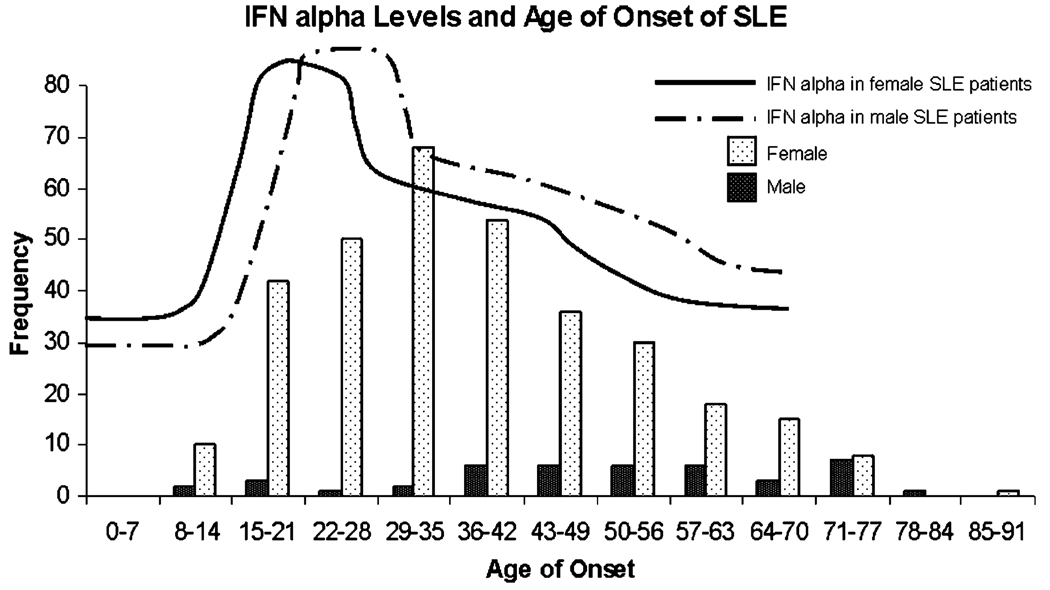Fig. 1.
IFN-α levels and age of onset of SLE. Average serum IFN-α levels by age in a large SLE cohort stratified by sex [22] are shown overlaid upon data regarding the sex-specific age of SLE incidence from a different large population-based study [5]. Serum IFN-α levels seem to correlate with age of SLE onset, as age ranges with higher levels of IFN-α correspond to age ranges of greater SLE incidence. Additionally, there is a time lag for both disease onset and peak serum IFN-α level in men as compared with women. The lines representing average serum IFN-α levels in SLE patients are drawn to approximate the patterns observed in [22], and the bars on the bar graph represent the number of incident SLE cases by age group on the Y axis in the study by Lopez et al. as detailed in [5]

